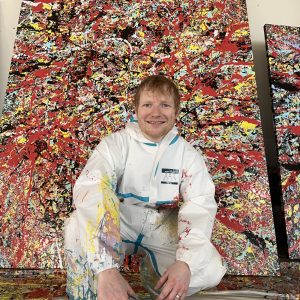Have you ever noticed how your attention wanes when you become hungry or tired? The ability to remain focused, retain information, and even maintain your general disposition is contingent on countless variables, internal as well as external, which affects your experiences. The museum and gallery space is no exception to these occurrences.
In Lois H. Silverman’s article entitled “Visitor Meaning-Making in Museums for a New Age”, she explains the paradigm shift away the from traditional “one-way linear path” laid out from the sender to the receiver to what she refers to as “a process of negotiation between two parties”. In the past, museums have been forced to sacrifice depth of focus in order to attract as wide an audience as possible.
Where once the dissemination of this information was limited, new advances in technology now offer accessible interactive opportunities to deliver resources and dynamic experiences for all.
Rather than attempt to create new information for users, museum professionals can develop exhibits and galleries that manifest contexts and connections to the audience. In place of showing documents or material as foreign, abstract or alien, we can incorporate information to foster meaning and memory to those that are exposed to that particular construct. In creating relevance, we can identify these correlations, and provide environments and concepts catered to visitor interests and enthusiasms. However, this is a two-way street. The public must not only feel encouraged to participate in this so-called negotiation but also recognize their own preferred approach and methodology to support and enhance their experiences.
In other words: you can lead a horse to water but you cannot make him drink. Collections and records matter only to the extent they are perceived to provide the public with something of value beyond the material’s own existence. Museums can create state-of-the-art exhibits and remarkable experiences but without interaction or connections made, that relevance or importance is diminished.
The challenge is to get the people to the museum, keep them there, keep them interested, and keep them coming back for more. At the same time if users can identify and hone their own methods, they may improve their approach to learning and retaining information. Countless variables, even something as seemingly insignificant as the aforesaid empty stomach and its impact on concentration, can have wide reaching effects. Understanding the museum and just as importantly, understanding yourself, will enrich and deepen the museum or artistic experience.
The purpose of this column is to offer a series of articles providing insights into improving the museum experience of today and the variables that affect that experience. Subjects and commentary will vary from academic to reflective to personal, all in regards to the impact of the museum.
Tell us what you think. How do you think the museum experience can improve? Feedback and participation is both welcomed and encouraged.
END.
Gregory Stall is a museum and library professional. www.linkedin.com




